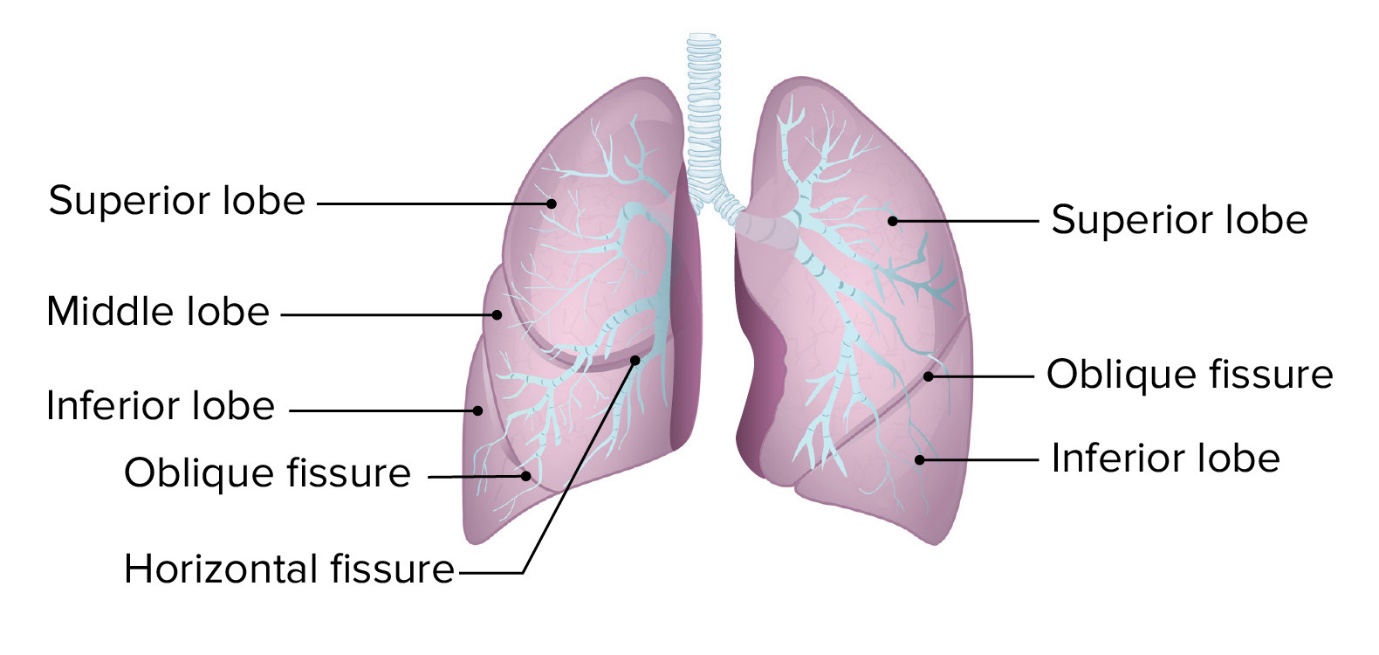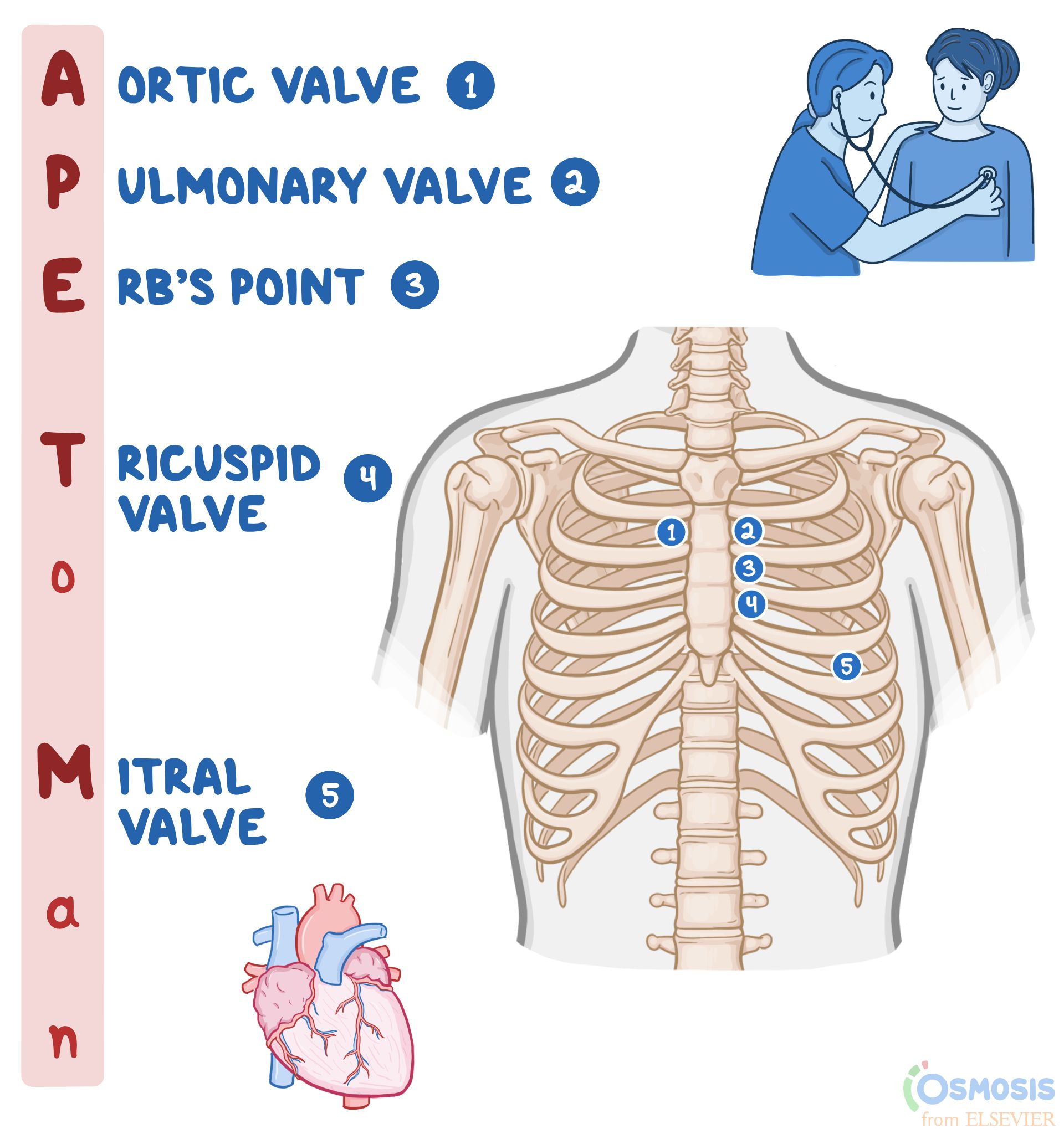The nurse is performing an assessment of the clients lungs. The nurse recognizes that the left lung:
Consists of two lobes.
Primarily consists of an upper lobe on the posterior chest.
Is shorter than the right lung because of the underlying stomach.
is divided by the horizontal fissure.
The Correct Answer is A
A. Consists of two lobes.
This statement is correct. The left lung consists of two lobes: the upper lobe and the lower lobe. The right lung, not the left lung, has three lobes: upper, middle, and lower lobes.
B. Primarily consists of an upper lobe on the posterior chest.
This statement is not accurate. The upper lobe of the left lung is present in the anterior and posterior parts of the chest. It is not limited to the posterior chest.
C. Is shorter than the right lung because of the underlying stomach.
This statement is not correct. The left lung is not shorter due to the underlying stomach. The left lung is slightly smaller than the right lung to accommodate the space for the heart, but this size difference is not due to the stomach.
D. Is divided by the horizontal fissure.
This statement is not accurate. The left lung is not divided by the horizontal fissure. The horizontal fissure is a feature of the right lung, not the left lung. The left lung is divided by the oblique fissure into the upper and lower lobes

Nursing Test Bank
Naxlex Comprehensive Predictor Exams
Related Questions
Correct Answer is C
Explanation
A. Fifth intercostal space, left of the midclavicular line: This placement is used to auscultate the mitral valve, which is best heard at the apex of the heart. The mitral valve sounds are typically heard around the fifth intercostal space, midclavicular line.
B. Left lower sternal border: This placement is used to auscultate the tricuspid valve, which is best heard at the lower left sternal border.
C. Second left intercostal space: This is the correct placement for auscultating the pulmonic valve. The pulmonic valve sounds are best heard at the second left intercostal space, which is close to the upper left sternal border.
D. Second right intercostal space: This placement is used to auscultate the aortic valve, which is best heard at the second right intercostal space, close to the upper right sternal border.

Correct Answer is C
Explanation
A. Friction rub:
A friction rub is a grating or rubbing sound or sensation heard or felt during auscultation or palpation. It occurs when inflamed pleural or pericardial surfaces rub against each other during breathing or heartbeats, respectively.
B. Tactile fremitus:
Tactile fremitus refers to the palpable vibrations transmitted through the bronchopulmonary tree to the chest wall as the patient speaks. It is assessed by placing hands on the patient's back while the patient speaks certain words. Increased tactile fremitus can occur in conditions with lung consolidation, such as pneumonia.
C. Crepitus:
Crepitus is a crackling or grating sensation felt under the skin or heard when the ends of a broken bone rub against each other. It can also occur when air leaks into subcutaneous tissue, leading to a crackling sensation upon palpation.
D. Adventitious sounds:
Adventitious sounds refer to abnormal lung sounds heard during auscultation. These sounds include crackles (rales), wheezes, rhonchi, and pleural friction rubs. Adventitious sounds can indicate various respiratory conditions, such as pneumonia, bronchitis, or asthma.
Whether you are a student looking to ace your exams or a practicing nurse seeking to enhance your expertise , our nursing education contents will empower you with the confidence and competence to make a difference in the lives of patients and become a respected leader in the healthcare field.
Visit Naxlex, invest in your future and unlock endless possibilities with our unparalleled nursing education contents today
Report Wrong Answer on the Current Question
Do you disagree with the answer? If yes, what is your expected answer? Explain.
Kindly be descriptive with the issue you are facing.
